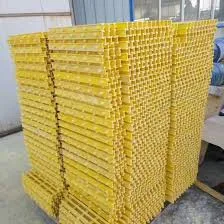
-
 Afrikaans
Afrikaans -
 Albanian
Albanian -
 Amharic
Amharic -
 Arabic
Arabic -
 Armenian
Armenian -
 Azerbaijani
Azerbaijani -
 Basque
Basque -
 Belarusian
Belarusian -
 Bengali
Bengali -
 Bosnian
Bosnian -
 Bulgarian
Bulgarian -
 Catalan
Catalan -
 Cebuano
Cebuano -
 China
China -
 China (Taiwan)
China (Taiwan) -
 Corsican
Corsican -
 Croatian
Croatian -
 Czech
Czech -
 Danish
Danish -
 Dutch
Dutch -
 English
English -
 Esperanto
Esperanto -
 Estonian
Estonian -
 Finnish
Finnish -
 French
French -
 Frisian
Frisian -
 Galician
Galician -
 Georgian
Georgian -
 German
German -
 Greek
Greek -
 Gujarati
Gujarati -
 Haitian Creole
Haitian Creole -
 hausa
hausa -
 hawaiian
hawaiian -
 Hebrew
Hebrew -
 Hindi
Hindi -
 Miao
Miao -
 Hungarian
Hungarian -
 Icelandic
Icelandic -
 igbo
igbo -
 Indonesian
Indonesian -
 irish
irish -
 Italian
Italian -
 Japanese
Japanese -
 Javanese
Javanese -
 Kannada
Kannada -
 kazakh
kazakh -
 Khmer
Khmer -
 Rwandese
Rwandese -
 Korean
Korean -
 Kurdish
Kurdish -
 Kyrgyz
Kyrgyz -
 Lao
Lao -
 Latin
Latin -
 Latvian
Latvian -
 Lithuanian
Lithuanian -
 Luxembourgish
Luxembourgish -
 Macedonian
Macedonian -
 Malgashi
Malgashi -
 Malay
Malay -
 Malayalam
Malayalam -
 Maltese
Maltese -
 Maori
Maori -
 Marathi
Marathi -
 Mongolian
Mongolian -
 Myanmar
Myanmar -
 Nepali
Nepali -
 Norwegian
Norwegian -
 Norwegian
Norwegian -
 Occitan
Occitan -
 Pashto
Pashto -
 Persian
Persian -
 Polish
Polish -
 Portuguese
Portuguese -
 Punjabi
Punjabi -
 Romanian
Romanian -
 Russian
Russian -
 Samoan
Samoan -
 Scottish Gaelic
Scottish Gaelic -
 Serbian
Serbian -
 Sesotho
Sesotho -
 Shona
Shona -
 Sindhi
Sindhi -
 Sinhala
Sinhala -
 Slovak
Slovak -
 Slovenian
Slovenian -
 Somali
Somali -
 Spanish
Spanish -
 Sundanese
Sundanese -
 Swahili
Swahili -
 Swedish
Swedish -
 Tagalog
Tagalog -
 Tajik
Tajik -
 Tamil
Tamil -
 Tatar
Tatar -
 Telugu
Telugu -
 Thai
Thai -
 Turkish
Turkish -
 Turkmen
Turkmen -
 Ukrainian
Ukrainian -
 Urdu
Urdu -
 Uighur
Uighur -
 Uzbek
Uzbek -
 Vietnamese
Vietnamese -
 Welsh
Welsh -
 Bantu
Bantu -
 Yiddish
Yiddish -
 Yoruba
Yoruba -
 Zulu
Zulu
pp frp tank
Understanding PP FRP Tanks A Comprehensive Overview
In the realm of modern materials and construction, Polypropylene (PP) Fiberglass Reinforced Plastic (FRP) tanks have emerged as a popular choice for various industrial applications. Combining the lightweight properties of polypropylene with the strength of fiberglass, these tanks offer a robust solution for storing liquids and chemicals. Their unique characteristics make them ideal for many industries, including wastewater treatment, chemical processing, and food production.
Material Composition
PP FRP tanks are constructed using a combination of polypropylene resin and fiberglass reinforcement. Polypropylene is known for its excellent chemical resistance, low moisture absorption, and high fatigue strength. When reinforced with fiberglass, the structural integrity of the tank is significantly enhanced, allowing it to withstand high pressures and temperatures. This composite nature not only improves the durability of the tanks but also extends their service life, making them a cost-effective option in the long run.
Advantages of PP FRP Tanks
1. Corrosion Resistance One of the most significant benefits of PP FRP tanks is their resistance to corrosion. Unlike traditional materials such as steel, these tanks do not suffer from rust or corrosion when exposed to aggressive chemicals. This makes them particularly useful in chemical storage applications where other materials would fail.
2. Lightweight The lightweight nature of polypropylene make these tanks easier to transport and install. Lower shipping costs and reduced labor for installation further enhance their economic advantages.
pp frp tank

3. Versatility PP FRP tanks can be manufactured in various sizes and shapes, accommodating different storage requirements. Whether for small-scale operations or large industrial facilities, these tanks can be customized to meet specific needs.
4. Low Maintenance Due to their corrosion-resistant properties and sturdy construction, PP FRP tanks require minimal maintenance. This not only reduces operational costs but also ensures safety in handling hazardous materials.
5. Environmental Friendly The production process of polypropylene and fiberglass is relatively environmentally friendly. Additionally, PP FRP tanks are recyclable, contributing to sustainable practices in industrial processes.
Applications
PP FRP tanks are utilized across a range of industries. In the wastewater treatment sector, they are used for storing chemicals like chlorine and sulfuric acid. In the food industry, they provide safe storage solutions for food additives and other liquids that require strict quality control. Furthermore, they are widely used in the pharmaceutical industry for their ability to maintain the integrity of sensitive compounds.
Conclusion
In summary, PP FRP tanks represent a significant advancement in storage technology. Their combination of lightweight construction, chemical resistance, and low maintenance requirements makes them an ideal choice for various industrial applications. As industries continue to seek durable and efficient solutions for liquid storage, the popularity of PP FRP tanks is likely to grow, paving the way for enhanced safety and reliability in industrial processes. Investing in these tanks not only ensures the safe handling of materials but also aligns with modern sustainable practices, making them a wise choice for the future.









